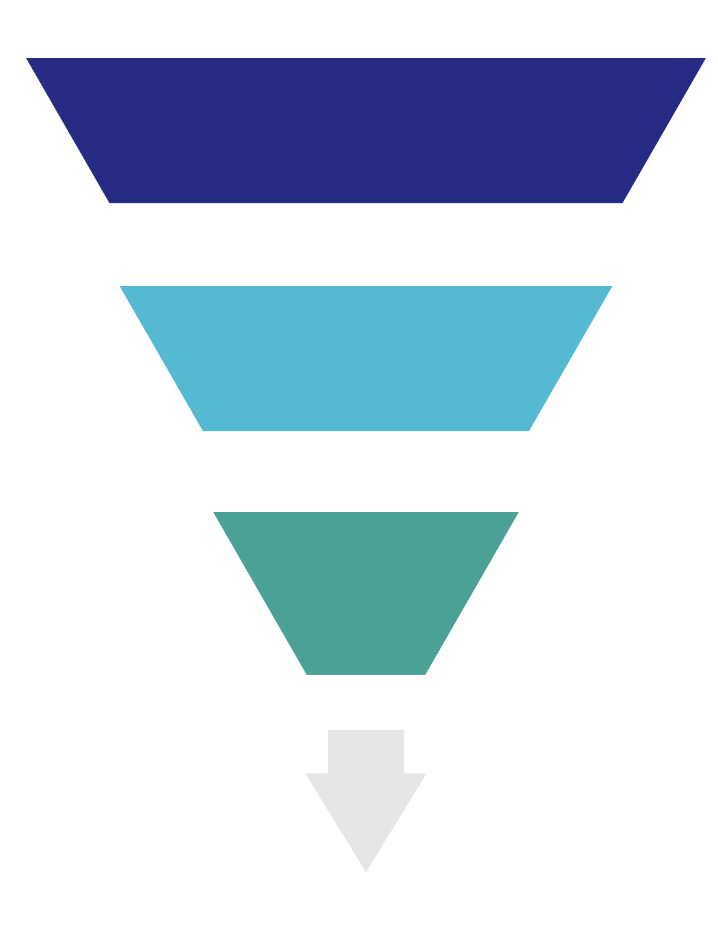Guide to Effective B2B Lead Generation for Tech Companies

September 12, 2025

The TSL Marketing B2B Tech Marketing Survey found that lead generation is a top priority for B2B tech companies. When we asked IT service firms which sales and marketing strategies they plan to prioritize in the next 12 months:
- 85% Chose Generating New Leads
- 47% Chose Improving Lead Conversion Rates


The fact that managed IT service providers identified lead generation and conversion rates as two of their top three priorities shows how important lead generation strategies are for B2B tech companies.
To stay competitive and grow, tech companies must generate quality leads that can be converted into customers. That’s why TSL is drawing on our 25 years of experience and expertise as a marketing agency for technology companies to offer this comprehensive guide to effective B2B lead generation.
This article will cover:
Understanding B2B Lead Generation
B2B lead generation is a way for technology companies, including IT service firms, to reach out to decision makers at companies in their target audience and turn them into customers. To be successful, B2B tech companies must generate marketing and sales qualified leads that are interested in buying their solutions and services. Lead generation feeds the pipeline, allowing tech companies to nurture leads and ultimately convert them.
B2B vs. B2C Lead Generation
B2B lead generation differs from B2C lead generation because of the target audiences. B2B tech companies are trying to engage decision makers at other companies, while B2C companies target individuals. B2B marketing emphasizes long-term professional relationships and data-driven decision making. B2C marketing is driven by emotional appeal and personalization.
B2B Lead Generation Funnel
The goal of B2B lead generation is to move prospects through a funnel that culminates in their becoming a customer. Different lead generation tactics address the needs of target audiences at each stage of the funnel.
Top of the Funnel (TOFU): Awareness
- Prospects are starting to understand their pain points.
- Content informs and educates.
Middle of the Funnel (MOFU): Consideration
- Prospects are looking at options for solving their problems.
- Content gives information on solutions, such as data sheets and webinars.
Bottom of the Funnel (BOFU): Conversion
- Prospects are ready to purchase solutions or services.
- Content such as case studies and demos encourages a purchase.

Types of Lead Generation Tactics
At TSL, we believe in using both inbound and outbound topics for lead generation. While digital marketing is favored today, outbound marketing tactics, such as telemarketing, add human warmth and personalization to the process of lead generation. Both approaches have pros and cons, making them complementary.
Using a variety of lead generation tactics helps B2B tech companies successfully find and engage prospects so that they can be turned into leads.
Inbound Lead Generation
Content MarketingBlogs, whitepapers, and webinars establish tech companies as industry thought leaders and provide opportunities for engagement.
SEO and Organic TrafficSearch Engine Optimization (SEO) ensures that a tech company’s web pages and other content ranks well on search engines, driving organic traffic to the website.
Social Media MarketingSocial media channels provide opportunities to engage with prospects through posts and ads.
Pros: Builds trust, long-term ROI
Cons: Slow ramp-up, requires consistent effort
Outbound Lead Generation
Cold EmailingB2B tech companies can send emails to a list of approved contacts.
Cold CallingExperienced business development team members reach out to a list of prospects to set up meetings.
LinkedIn OutreachCompanies can use LinkedIn to reach out to prospects using connection requests and messages with the goal of initiating conversations.
Pros: Immediate results, scalable
Cons: Can be intrusive, lower conversion rates
Paid Advertising
Digital advertising is a great addition to an overall lead generation strategy. B2B tech firms can leverage Google Ads, LinkedIn Ads, and display ads on websites or apps to attract leads using concise visual messaging. Digital advertising can be used as a retargeting strategy by using ads to reach out to prospects that have already engaged with other content.
Pros: Fast traffic, precise targeting
Cons: Costly, requires optimization
Event-Based Lead Generation
While event-based marketing had lost popularity during the lock-down, it’s back in full force. Trade shows, webinars, and virtual summits provide an opportunity to network with B2B prospects.
Pros: High engagement, brand visibility
Cons: Expensive, time-consuming
Partnership & Channel Lead Generation
B2B tech firms can spread their reach by co-marketing with vendors or resellers. Affiliate programs allow companies to promote their products or services through a channel partner in exchange for commission on leads generated.
Pros: Leverages existing trust, expands reach
Cons: Dependency on partners, shared control
Account-Based Marketing (ABM)
ABM is a strategic approach to B2B lead generation in which sales and marketing teams collaborate to create personalized campaigns for high-value targets to drive deeper engagement by addressing specific needs and challenges.
Pros: High ROI, tailored messaging
Cons: Resource-intensive, longer sales cycles
Lead Generation by Type of IT Firm
B2B IT firms benefit from lead generation tactics and strategies customized for their type of company.
Software as a Service (SaaS) Companies
SaaS companies may use freemium models, demos, and content-driven inbound marketing to generate leads. The marketing message should focus on scalability and automation.
Managed Service Providers (MSPs)
MSPs benefit from lead generation tactics that leverage local SEO, referral programs, and outreach. Messaging should emphasize trust and reliability.
Cloud Service Providers (CSPs)
CSPs can engage prospects using technical webinars and cloud migration guides. Messaging should target IT decision-makers.
IT Services & Consulting Firms
IT Services and Consulting firms attract leads through thought leadership content and case studies, as well as LinkedIn networking. Marketing efforts should be supplemented with relationship-driven sales tactics.
Channel-Focused Firms
Channel-Focused firms benefit from the use of Market Development Funds (MDFs) and the development of co-branded campaigns. Lead generation efforts include partner enablement and lead sharing between companies and their channel partners.
Key Trends in B2B Lead Generation
B2B tech companies should take note of key trends in lead generation. Here’s an overview of some of the current trends.
AI and Automation
AI and automation are increasingly being used for lead scoring and nurturing. AI-powered lead scoring and nurturing helps companies focus on quality leads and follow up on them.
Advanced Analytics
B2B marketers are using intent data and predictive analytics to better understand user behavior and predict future actions so they can tailor lead generation strategies.
Conversational Marketing
Conversational marketing uses chatbots, messaging apps, and live chat to create personalized, real-time interactions with potential customers that use two-way communication.
Interactive Marketing
Like conversational marketing, interactive marketing encourages back-and-forth communication between potential customers and a brand. Interactive experiences lead to increased conversions.
Video Marketing
Video content is a great way to convey messaging in a concise and memorable way. Video can be hosted on web pages or linked to digital ads to encourage clicks.
Privacy & Ethics
Privacy and ethics have become a concern for B2B marketers. Lead generation tactics must follow privacy regulations and reflect ethical data use.
CRM Integration
B2B tech firms integrate Customer Relationship Management (CRM) and marketing automation platforms with lead capture and nurturing tools to streamline the process of managing leads.
Measuring Lead Generation Success
Measuring lead generation performance is essential for achieving continuous optimization for increased success over time. B2B tech companies must establish key metrics to set a baseline and track progress. Key Performance Indicators (KPIs) for lead generation include:
Sales Qualified Leads (SQLs) are leads that progressed beyond initial interest and are ready for direct sales engagement because they are likely to convert into a paying customer.
Conversion Rate is the percentage of users who complete a desired action, such as clicking a link or filling out a form, after interacting with marketing content.
Customer Acquisition Cost (CAC) is the total cost of gaining a new customer based on the amount of money spent on activities to convert a lead.
Return on Investment (ROI) is the amount of business value generated by investments in lead generation activities.
IT firms should use tools for tracking and analyzing performance data, such as:
✅ HubSpot✅ Salesforce
Avoiding Common Lead Generation Pitfalls
Following best practices for B2B lead generation will help technology companies avoid common pitfalls that stand in the way of success. Here’s an overview of four common pitfalls and how to avoid them.
1. Misalignment Between Marketing and Sales
TSL research found that only 14% of companies have marketing and sales teams that work together throughout the entire buying process. In almost 50% of companies, marketing is responsible for generating and nurturing leads, but sales closes deals.
As a HubSpot Partner, TSL believes in using Smarketing, the practice of aligning marketing and sales teams, for lead generation. When marketing and sales teams are on the same page, they understand how to find, pass off, and nurture qualified leads.
2. Poor Lead Qualification
Not every lead is a quality lead. Generating Marketing Qualified Leads (MQLs) and Sales Qualified Leads (SQLs) is essential for ensuring that pipelines can be converted into customers.
3. Relying on One Tactic
Using one tactic to generate leads means you are missing out on prospects that use other channels to engage with brands. To succeed with lead generation, B2B tech companies need to find the right marketing mix. Omni-channel marketing helps reach target audiences in a variety of places where they prefer to congregate.
4. Ignoring Customer Feedback and Data
Using one tactic to generate leads means you are missing out on prospects that use other channels to engage with brands. To succeed with lead generation, B2B tech companies need to find the right marketing mix. Omni-channel marketing helps reach target audiences in a variety of places where they prefer to congregate.
How to Achieve Effective B2B Lead Generation
To be successful with lead generation, B2B tech companies need to create the right marketing mix to reach and engage their target audience. Lead generation tactics may vary according to the type of technology company. Working with an experienced B2B marketing agency will help tailor your approach to lead generation in order to reach your goals.
TSL Marketing has more than 25 years of experience as a B2B marketing agency. We can develop a customized lead generation strategy for your technology firm.
Get started on evaluating your current lead gen strategy and exploring new tactics. Request a lead generation proposal from TSL Marketing today.